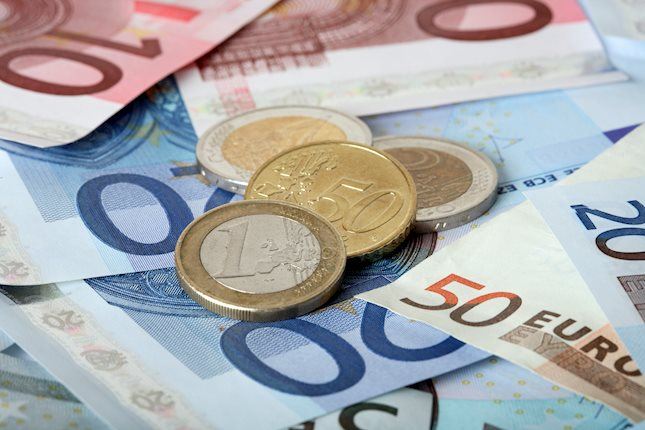AUD/USD faces some selling pressure below 0.6750 on weaker Chinese data, geopolitical risks

- AUD/USD loses traction to near 0.6730 in Monday’s early Asian session.
- The weaker Chinese economic data undermines the China-proxy AUD.
- The US PPI supports expectations of a Fed rate cut next month.
The AUD/USD pair attracts some sellers to around 0.6730 and during the early Asian session on Monday. The stronger US Dollar (USD) and China’s deflationary pressures exert some selling pressure on the major pair. Traders will take more cues from the Chinese Trade Balance data, which is due later on Monday.
The weaker-than-expected China’s consumer and factory prices for September weigh on the Australian Dollar (AUD) as China is a major trading partner to Australia. Data released by the National Bureau of Statistics of China on Sunday showed that the nation’s Consumer Price Index (CPI) increased 0.4% YoY in September, compared to 0.6% in August. This figure was below the market consensus of 0.6%. Meanwhile, the Producer Price Index (PPI) fell 2.8% YoY in September versus -1.8% prior, weaker than the expectations of -2.5%.
On the other hand, US PPI data reinforces expectations for a 25 basis points (bps) Federal Reserve (Fed) rate cut in November, which might cap the upside for the Greenback. The US PPI was unchanged in September, while the core PPI was up 0.2% during the same period.
The annual PPI rose 1.8% in September, followed by the 1.9% increase seen in August, and came in above the market expectation of 1.6%. The annual core PPI rose 2.8% in the same period, surpassing analysts’ estimate of 2.7%. The swaps markets show the Fed’s odds for a 25 bps rate cut at 95.6%, up from 83.3% before the PPI data, according to the CME FedWatch Tool.
Israel Defence Forces (IDF) said on Sunday that four soldiers had been killed and more than 60 other people injured in a drone strike targeting an army base in northern Israel, per the BBC. Hezbollah has claimed responsibility for the attack. The escalating geopolitical tensions in the Middle East might boost the safe-haven flows, benefitting the USD.
Australian Dollar FAQs
One of the most significant factors for the Australian Dollar (AUD) is the level of interest rates set by the Reserve Bank of Australia (RBA). Because Australia is a resource-rich country another key driver is the price of its biggest export, Iron Ore. The health of the Chinese economy, its largest trading partner, is a factor, as well as inflation in Australia, its growth rate and Trade Balance. Market sentiment – whether investors are taking on more risky assets (risk-on) or seeking safe-havens (risk-off) – is also a factor, with risk-on positive for AUD.
The Reserve Bank of Australia (RBA) influences the Australian Dollar (AUD) by setting the level of interest rates that Australian banks can lend to each other. This influences the level of interest rates in the economy as a whole. The main goal of the RBA is to maintain a stable inflation rate of 2-3% by adjusting interest rates up or down. Relatively high interest rates compared to other major central banks support the AUD, and the opposite for relatively low. The RBA can also use quantitative easing and tightening to influence credit conditions, with the former AUD-negative and the latter AUD-positive.
China is Australia’s largest trading partner so the health of the Chinese economy is a major influence on the value of the Australian Dollar (AUD). When the Chinese economy is doing well it purchases more raw materials, goods and services from Australia, lifting demand for the AUD, and pushing up its value. The opposite is the case when the Chinese economy is not growing as fast as expected. Positive or negative surprises in Chinese growth data, therefore, often have a direct impact on the Australian Dollar and its pairs.
Iron Ore is Australia’s largest export, accounting for $118 billion a year according to data from 2021, with China as its primary destination. The price of Iron Ore, therefore, can be a driver of the Australian Dollar. Generally, if the price of Iron Ore rises, AUD also goes up, as aggregate demand for the currency increases. The opposite is the case if the price of Iron Ore falls. Higher Iron Ore prices also tend to result in a greater likelihood of a positive Trade Balance for Australia, which is also positive of the AUD.
The Trade Balance, which is the difference between what a country earns from its exports versus what it pays for its imports, is another factor that can influence the value of the Australian Dollar. If Australia produces highly sought after exports, then its currency will gain in value purely from the surplus demand created from foreign buyers seeking to purchase its exports versus what it spends to purchase imports. Therefore, a positive net Trade Balance strengthens the AUD, with the opposite effect if the Trade Balance is negative.
Information on these pages contains forward-looking statements that involve risks and uncertainties. Markets and instruments profiled on this page are for informational purposes only and should not in any way come across as a recommendation to buy or sell in these assets. You should do your own thorough research before making any investment decisions. FXStreet does not in any way guarantee that this information is free from mistakes, errors, or material misstatements. It also does not guarantee that this information is of a timely nature. Investing in Open Markets involves a great deal of risk, including the loss of all or a portion of your investment, as well as emotional distress. All risks, losses and costs associated with investing, including total loss of principal, are your responsibility. The views and opinions expressed in this article are those of the authors and do not necessarily reflect the official policy or position of FXStreet nor its advertisers. The author will not be held responsible for information that is found at the end of links posted on this page.
If not otherwise explicitly mentioned in the body of the article, at the time of writing, the author has no position in any stock mentioned in this article and no business relationship with any company mentioned. The author has not received compensation for writing this article, other than from FXStreet.
FXStreet and the author do not provide personalized recommendations. The author makes no representations as to the accuracy, completeness, or suitability of this information. FXStreet and the author will not be liable for any errors, omissions or any losses, injuries or damages arising from this information and its display or use. Errors and omissions excepted.
The author and FXStreet are not registered investment advisors and nothing in this article is intended to be investment advice.
Editors’ Picks
EUR/USD sellers gain confidence alongside the Fed
The EUR/USD pair fell towards a fresh two-month low of 1.0900, finishing the second consecutive week in negative though little changed at around 1.0940. The US Dollar shed some ground at the beginning of the week but resumed its advance following United States headlines.
Five best Forex brokers in 2024
VERIFIED Choosing the best Forex broker in 2024 requires careful consideration of certain essential factors. With the wide array of options available, it is crucial to find a broker that aligns with your trading style, experience level, and financial goals.



